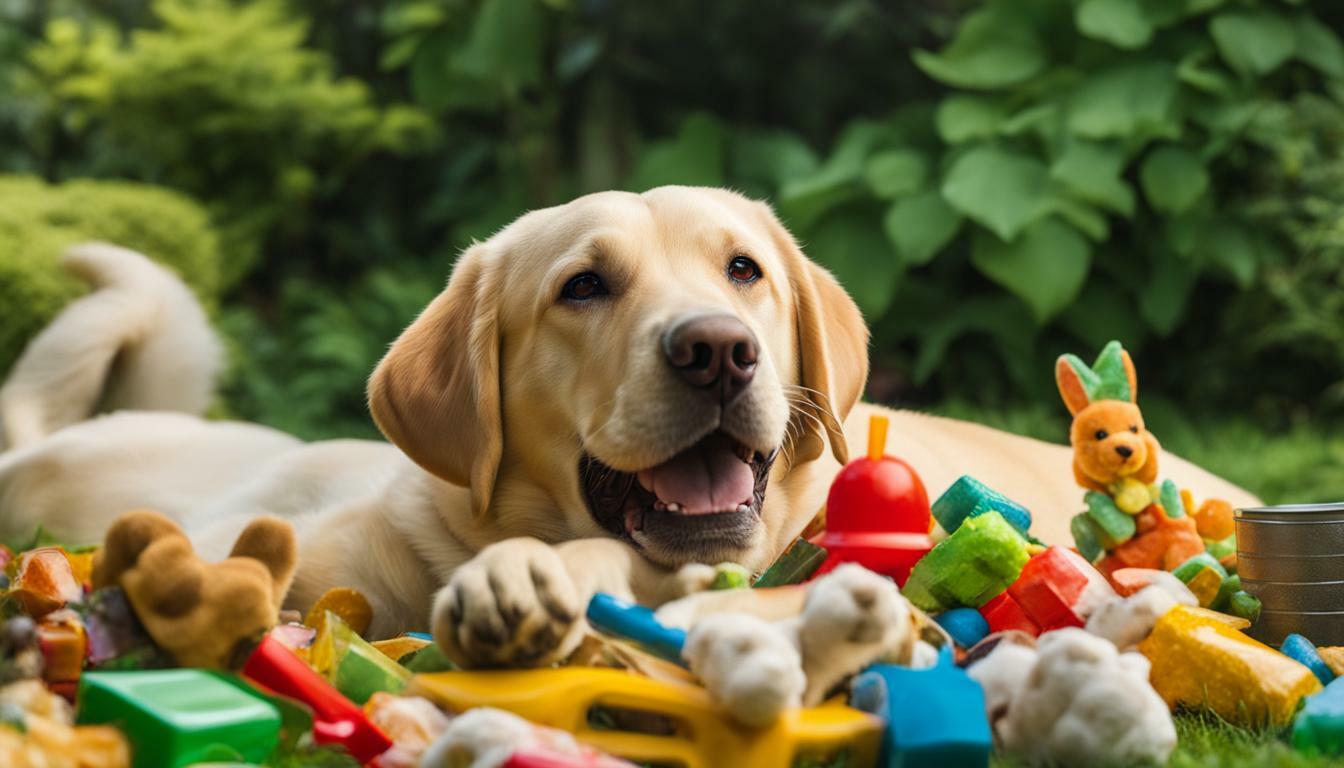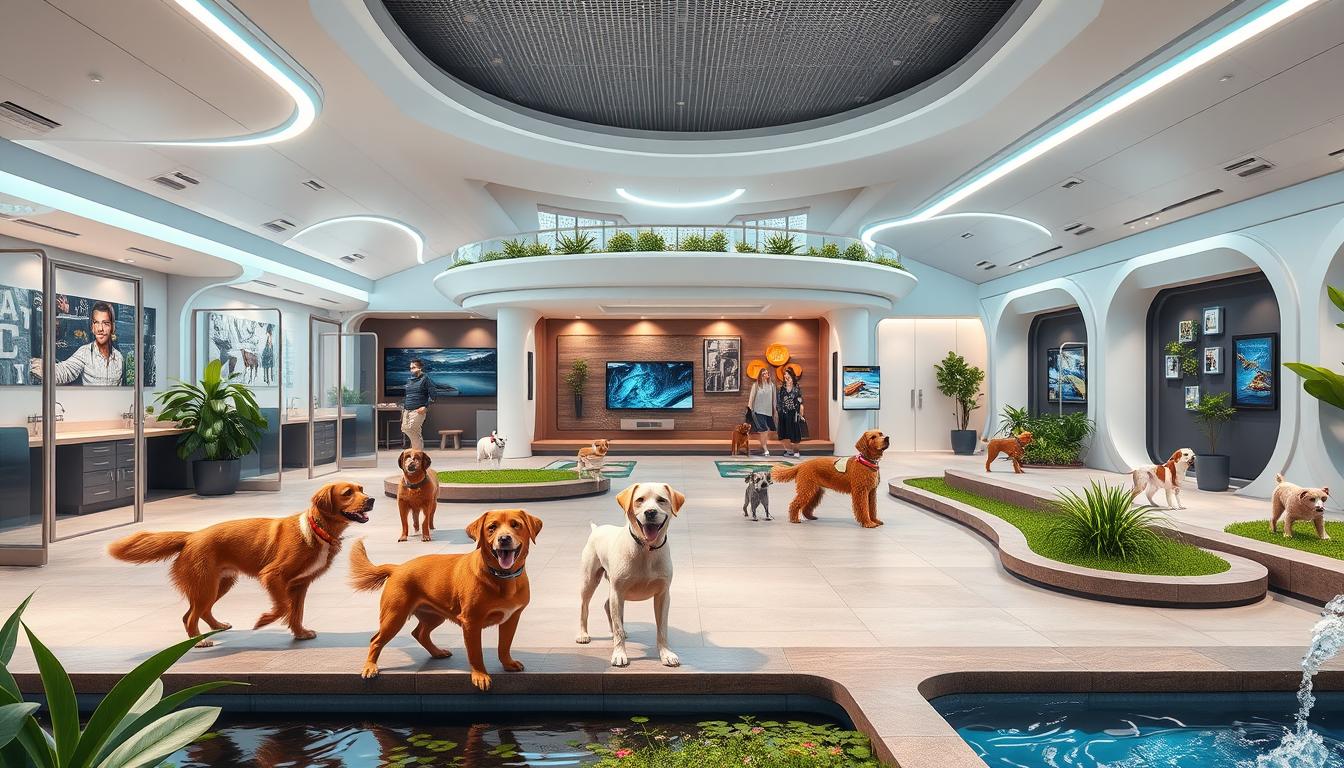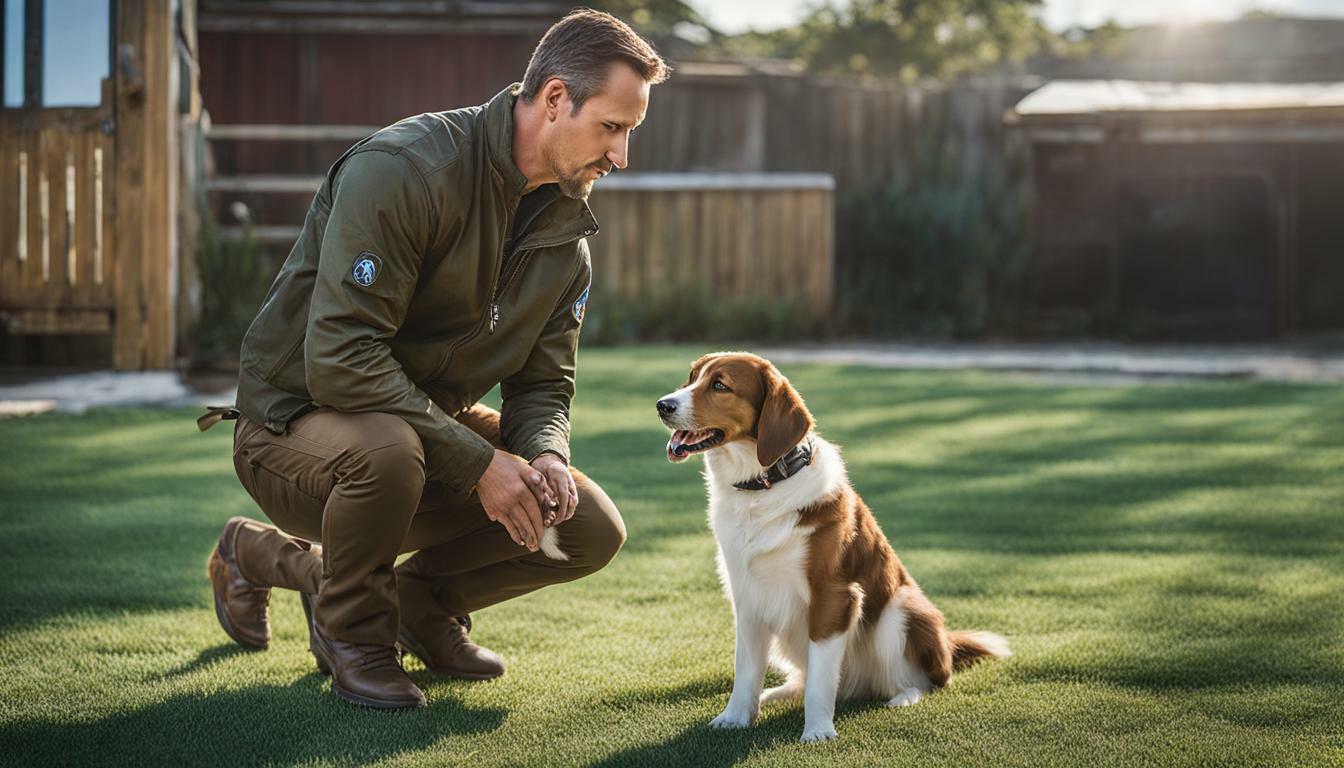Welcome to our comprehensive Labrador Retriever ownership guide! Here, we’ll provide you with everything you need to know to become a responsible and loving owner of this intelligent and energetic breed. From training techniques to health and nutrition, grooming tips to exercise needs, we’ve got you covered. Whether you’re a first-time owner or an experienced Labrador enthusiast, our guide will help you provide the best care for your furry friend.
- Our Labrador Retriever ownership guide covers everything from training to nutrition, grooming to socialization.
- Effective training techniques can help you manage behavioral issues and maintain a well-behaved Labrador.
- Proper nutrition is crucial for the overall health and well-being of your Lab.
- Grooming should be part of your regular care routine to keep your Lab’s coat healthy and clean.
- Labs need regular exercise to stay physically and mentally healthy.
Getting Started with Labrador Retriever Ownership
Bringing home a new Labrador Retriever can be an exciting and rewarding experience, but it’s important to remember that owning a dog is a serious commitment. Being a responsible and informed owner is the key to a happy and healthy relationship with your furry companion.
Find a Reputable Breeder or Rescue Organization
Before bringing home a new Labrador Retriever, you’ll need to decide whether to purchase from a breeder or adopt from a rescue organization. If you choose to purchase from a breeder, it’s important to find a reputable one who prioritizes the health and well-being of their dogs.
Research breeders thoroughly and ask plenty of questions about the health and temperament of their dogs. A responsible breeder should be happy to provide you with health clearances for the parents and information about the puppy’s socialization and early training.
If you decide to adopt from a rescue organization, make sure to choose one that is reputable and provides adequate care for their dogs. Many rescue organizations will also provide you with information about the dog’s history and temperament to help you make an informed decision.
Prepare Your Home for Your New Pet
Before bringing your new Labrador Retriever home, you’ll need to prepare your living space to ensure their safety and comfort. Start by puppy-proofing your home, which means removing any hazardous items or objects that your dog could potentially chew or ingest.
Make sure your home is equipped with all the essential supplies, including food and water bowls, a comfortable bed, and plenty of toys for your new pet to play with. Set up a designated area for your dog to sleep, eat, and relax.
Gather Essential Supplies
There are a few key items you’ll need to have on hand when bringing home your new Labrador Retriever. These include:
- A high-quality dog food
- A leash and collar for walks
- A crate or carrier for transportation and training
- A variety of toys for playtime and mental stimulation
- Grooming supplies, including a brush, nail clippers, and shampoo
Investing in these essential supplies before bringing your new pet home will ensure a smooth transition and help you provide the best possible care for your new furry friend.

Labrador Retrievers are intelligent dogs that respond well to positive reinforcement. Training your Labrador from a young age will help prevent behavior issues and aggression in adulthood. Here are some effective Labrador Retriever training techniques to get you started:
Start with Basic Obedience Training
Basic obedience training is essential for every Labrador Retriever. Start with simple commands like sit, stay, come, and heel. Use treats and positive reinforcement to reward good behavior. Consistency is key – practice these commands every day until your Labrador responds without hesitation.
Housebreaking Your Labrador Retriever
Housebreaking your Labrador Retriever is an important part of training. Puppies should be taken outside frequently, especially after meals, naps, or playtime. Use a designated spot in your yard to encourage your puppy to go potty. Reward them with treats and praise when they do their business outside, and be patient – accidents will happen.
Socialization for Your Labrador Retriever
Socializing your Labrador Retriever from a young age is crucial for their development. Introduce your puppy to new people, animals, and environments to help them become comfortable and confident in different situations. Use positive reinforcement to reward good behavior and help your puppy feel safe and secure.
Advanced Training Techniques
Once your Labrador Retriever has mastered basic obedience, you can move on to more advanced training techniques like agility or flyball. These activities provide mental and physical stimulation for your dog and help prevent boredom and destructive behavior. Remember to use positive reinforcement and always keep training sessions fun and engaging.
With patience and consistency, you can train your Labrador Retriever to be a well-behaved and obedient pet. Remember to use positive reinforcement, be consistent, and always keep training sessions fun and engaging. For more tips and techniques, consult a professional dog trainer or consult our Labrador Retriever ownership guide.
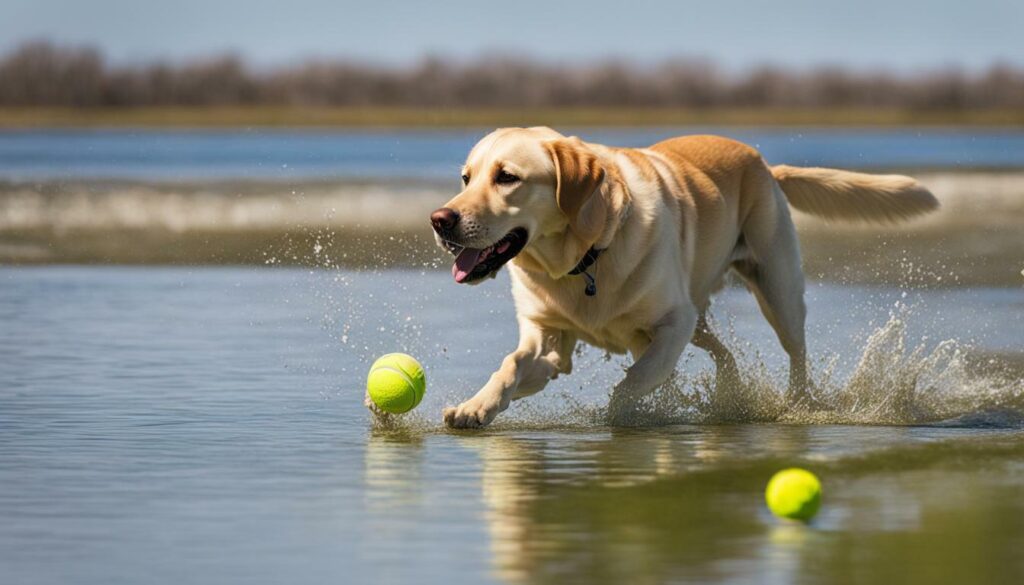
Proper nutrition plays a vital role in keeping your Labrador Retriever healthy and happy. As a responsible owner, it’s important to provide your pet with a balanced and nutritious diet to ensure they receive all the essential nutrients they need to thrive.
When selecting dog food for your Labrador Retriever, it’s best to look for high-quality options that contain real meat as the main ingredient. Avoid foods that contain fillers and by-products, as these can be harmful to your dog’s health.
It’s also important to pay attention to portion sizes, especially as your Lab ages and becomes less active. Overfeeding can lead to obesity, which can result in a range of health problems, including joint issues and heart disease. Similarly, underfeeding can lead to malnutrition and an increased risk of illness.
To ensure your Labrador Retriever receives a well-rounded diet, it’s a good idea to incorporate a mix of dry kibble and wet food, as well as fresh fruits and vegetables as healthy snack options. You can also supplement their diet with vitamins and minerals to address specific health concerns or nutritional deficiencies.
Remember to always provide your Labrador Retriever with access to clean, fresh water at all times to keep them hydrated and healthy.

Giving your Labrador Retriever the proper nutrition and care is essential for maintaining their health and well-being. By following these Labrador Retriever care tips, you can ensure your pet lives a happy and healthy life.
Grooming Your Labrador Retriever
Grooming your Labrador Retriever is an essential part of their care routine. These dogs have a double coat that requires regular attention to keep it healthy and clean.
Here are some Labrador Retriever grooming tips:
| Grooming Task | Frequency |
|---|---|
| Brushing | At least once a week |
| Bathing | Every three months, or as needed |
| Nail trimming | Once a month or as needed |
| Ear cleaning | Every week to two weeks |
Brushing: Regular brushing is necessary to remove dirt, loose hair, and prevent matting. Use a pin brush or slicker brush and start at the head, brushing with the direction of hair growth.
Bathing: Only bathe your Labrador Retriever when necessary, using a dog-specific shampoo. Don’t forget to rinse thoroughly, as leftover shampoo residue can cause skin irritation.
Nail trimming: Keep your Labrador’s nails trimmed to prevent discomfort and potential injury. Use nail clippers or a grinder, and aim to cut just the tip of the nail.
Ear cleaning: Labrador Retrievers are prone to ear infections, so routine cleaning is crucial. Use a dog-specific ear cleaning solution and cotton balls to gently clean their ears, being careful not to insert anything too deep.
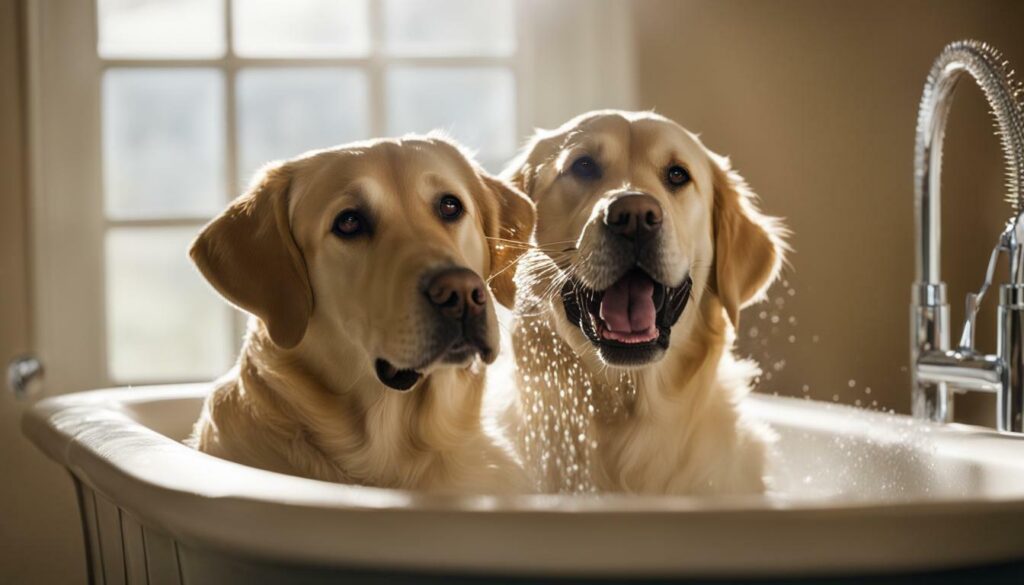
Regular grooming not only helps maintain your Labrador’s appearance but also prevents potential health issues. Incorporate these grooming tasks into your Lab’s care routine and enjoy a happy, healthy companion.
Meeting Exercise Needs for a Happy and Healthy Lab
If you’re considering owning a Labrador Retriever, it’s important to understand that these dogs have high energy levels and require regular exercise to maintain their physical and mental health. Providing your Labrador with ample exercise opportunities will not only keep them physically fit, but also reduce the likelihood of destructive tendencies such as chewing and digging.
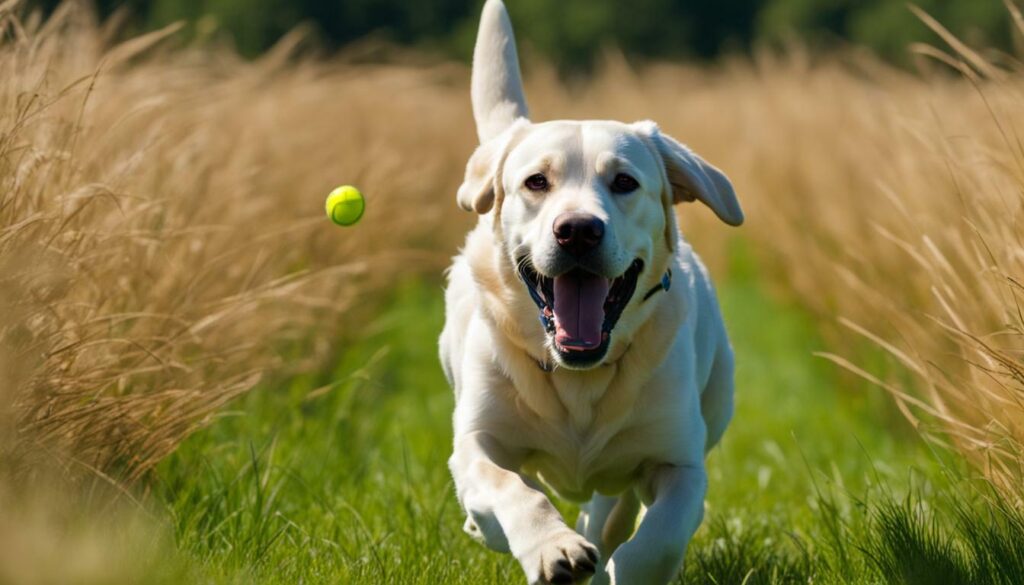
Experts recommend that Labs receive at least 30-60 minutes of exercise each day, depending on their age, health, and activity level. This can include walks around the neighborhood, playing fetch in the park, or swimming in a pool or lake. It’s also important to provide your Labrador with mental stimulation through interactive toys, puzzle feeders, and training sessions.
When exercising your Labrador, be sure to take their physical abilities into consideration. Avoid exercising them in extreme heat or cold, and refrain from rigorous activities until they’ve fully matured to avoid joint damage. Additionally, always provide your Lab with access to water to prevent dehydration.
Regular exercise not only benefits your Labrador’s physical and mental health, but also strengthens the bond between you and your pet. Make sure to carve out time in your schedule to provide your Labrador with the exercise and attention they need to thrive.
Addressing Behavioral Issues in Labrador Retrievers
Labrador Retrievers are generally easy-going and friendly dogs, but like any breed, they can develop behavioral issues if not properly trained and socialized. Some common behavioral issues include excessive barking, chewing, digging and separation anxiety. If you’re experiencing any of these issues with your Labrador Retriever, don’t despair. In this section, we’ll explore strategies and training techniques to help address and manage these common behavioral problems in Labs.
Excessive Barking
Labrador Retrievers are typically vocal dogs, and barking is a natural way for them to communicate. However, if your Lab is barking excessively, it can be a nuisance to you and your neighbors. The first step in managing excessive barking is to determine the root cause. Some common reasons for excessive barking include boredom, anxiety, or a need for attention. Once you’ve identified the cause, you can take steps to address it.
If your Lab is barking out of boredom, make sure they’re getting enough exercise and playtime. A tired dog is typically a happy and quiet dog. If your Lab is barking out of anxiety or a need for attention, try providing them with interactive toys or engaging in activities that stimulate their mind, such as obedience training or agility classes. Consistency is key when addressing excessive barking. Set clear rules and boundaries for your Lab, and be patient as you work with them to modify their behavior.
Chewing and Digging
Labrador Retrievers are known for their love of chewing, and it’s not uncommon for them to chew on things they shouldn’t. This behavior can be destructive and costly, so it’s important to take steps to discourage it. First, make sure your Lab has plenty of appropriate chew toys to satisfy their urge to chew. Consistency and redirection are key when training your Lab not to chew on inappropriate items. If you catch your Lab chewing on something they shouldn’t, redirect their attention to an appropriate chew toy or bone.
Digging is another common behavior in Labradors, but it can be frustrating if your dog is ruining your landscaping or digging holes in your yard. Providing your Lab with a designated digging area and consistently redirecting them to it when they start to dig elsewhere can help discourage this behavior. Make sure your Lab has interesting toys or objects buried in the digging area to encourage them to use it.
Separation Anxiety
Separation anxiety is a common problem in dogs, and Labradors are no exception. If your Lab exhibits signs of anxiety or distress when you leave them alone, there are steps you can take to help them feel more secure. Start by gradually increasing the amount of time your Lab spends alone. Make sure they have plenty of toys and activities to keep them occupied while you’re away, such as puzzle toys or interactive feeders.
You can also work on building your Lab’s independence by encouraging them to spend time alone in a separate room while you’re home. Provide positive reinforcement when your Lab is calm and relaxed while alone, and avoid making a big fuss when you leave or return home. Consistency and patience are key when dealing with separation anxiety, and it may take time and effort to see improvements in your Lab’s behavior.
With patience, consistency, and the right training techniques, you can address and manage common behavioral issues in your Labrador Retriever. Remember to always be kind and gentle with your dog as you work to modify their behavior, and seek the help of a professional trainer or veterinarian if you’re struggling to make progress. With time, effort, and love, you and your Labrador Retriever can enjoy a happy and harmonious life together.
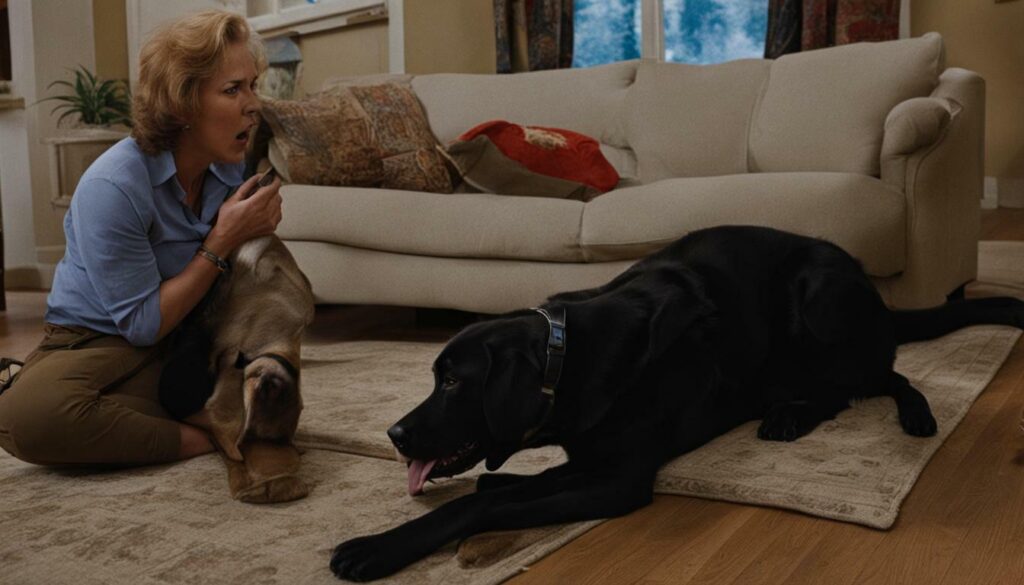
Socializing your Labrador Retriever is an important aspect of their development. Proper socialization can help prevent behavioral problems such as fear, aggression, and shyness. It can also help them become confident, friendly, and well-rounded dogs.
The socialization process should start as early as possible, ideally before your puppy is 12 weeks old. During this time, they are most receptive to new experiences and are still forming their opinions about the world around them.
To socialize your Labrador Retriever, start by exposing them to a variety of people, dogs, and environments. This can include taking them to the park, introducing them to new friends and family members, and exposing them to different sights and sounds.
Make sure your Labrador Retriever has positive experiences during socialization. Use treats, toys, and praise to reinforce good behavior. Avoid overwhelming them with too much at once or forcing them into uncomfortable situations.
It’s also important to continue socializing your Labrador Retriever throughout their life. Expose them to new experiences and reinforce positive behavior regularly. This can help them maintain their confidence and friendliness.
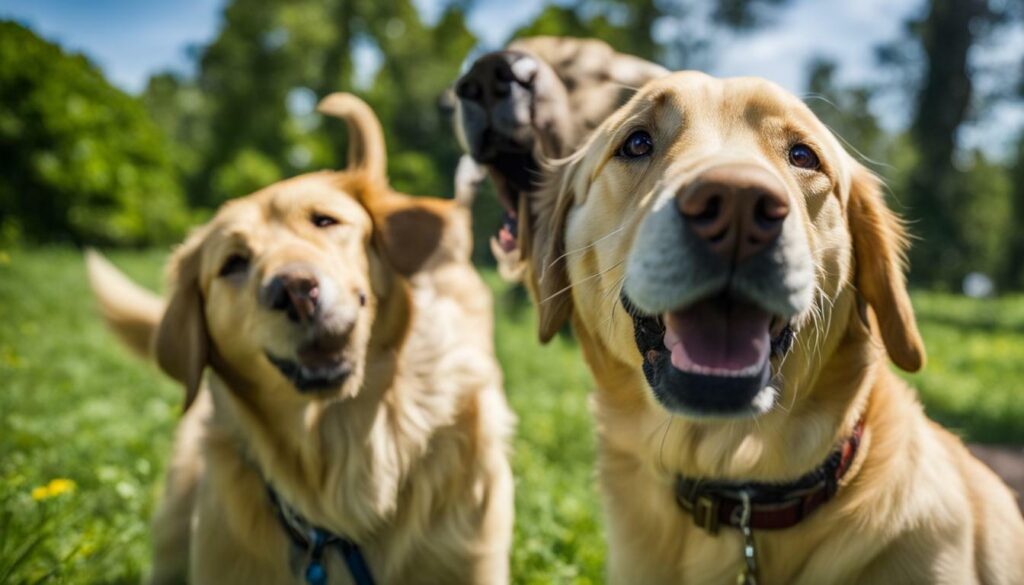
If you’re considering bringing a Labrador Retriever puppy into your home, it’s important to find a reputable breeder who prioritizes the health and temperament of their puppies.
Finding a Reputable Breeder
One way to ensure you’re getting a healthy and well-adjusted puppy is to find a breeder who is a member of national or local breed clubs. These organizations typically have strict guidelines for breeders to follow, including regular health testing and socialization.
Additionally, asking for references and visiting the breeder’s facilities can help you evaluate their practices and the living conditions of their dogs. Beware of breeders who sell puppies online or offer to ship them to you without meeting in person first.
Evaluating Health and Temperament
When visiting a breeder, take the time to observe the puppies’ behavior and ask about their parentage. A reputable breeder should be able to provide you with documentation of health clearances for both the mother and father of the litter.
It’s also important to consider the temperament of the puppies and their parents. Look for puppies who are friendly, curious, and playful, as well as parents who are well-behaved and socialized.
Preparing for Your Puppy’s Arrival
Bringing home a new puppy requires some preparation. Make sure you have all the necessary supplies, including food and water bowls, a comfortable bed, and appropriate toys. You’ll also need to puppy-proof your home and set up a designated potty area.
Additionally, consider enrolling in a puppy training class to help socialize your new pet and establish good behavior patterns. With patience, love, and the right preparation, your Labrador Retriever puppy can become a loyal and beloved companion for years to come.
FAQ
Q: What is the Ultimate Chihuahua Ownership Guide about?
A: The Ultimate Chihuahua Ownership Guide provides comprehensive information on caring for your pet. It covers topics such as training techniques, health and nutrition, grooming tips, exercise needs, behavioral issues, and more.
Q: What should I consider before getting a Labrador Retriever?
A: Before getting a Labrador Retriever, it’s important to understand the responsibilities involved. This includes finding a reputable breeder or rescue organization, preparing your home, and gathering essential supplies.
Q: What training tips are included in the Labrador Retriever ownership guide?
A: The Labrador Retriever ownership guide provides effective training techniques for puppies and adult Labradors. It covers housebreaking, basic obedience, and socialization.
Q: How can I ensure my Labrador Retriever has a healthy diet?
A: The Labrador Retriever ownership guide offers guidance on selecting the right dog food, understanding portion sizes, and addressing specific dietary needs and concerns.
Q: What are the grooming tips for Labrador Retrievers?
A: Labrador Retrievers have a double coat that requires regular grooming. The Labrador Retriever ownership guide provides tips and techniques for brushing, bathing, nail trimming, and ear cleaning.
Q: How can I meet the exercise needs of my Labrador Retriever?
A: The Labrador Retriever ownership guide explores different exercise options, including daily walks, playtime, swimming, and agility training, to help meet the high energy levels of Labradors.
Q: How can I address behavioral issues in my Labrador Retriever?
A: The Labrador Retriever ownership guide provides strategies and training techniques to address and manage common behavioral problems in Labradors, such as excessive barking, chewing, and separation anxiety.
Q: How can I socialize my Labrador Retriever?
A: The Labrador Retriever ownership guide guides you through the process of socializing your Lab, introducing them to different people, animals, and environments to ensure they grow into confident and sociable dogs.
Q: What should I consider when looking for Labrador Retriever puppies for sale?
A: The Labrador Retriever ownership guide provides tips on finding a reputable breeder, evaluating the health and temperament of the puppies, and preparing for their arrival in your home.
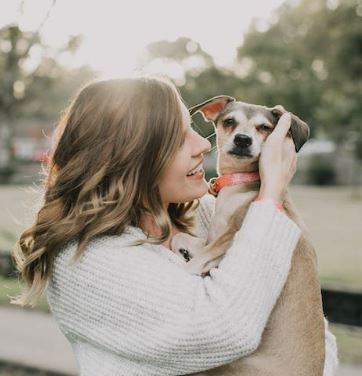
Marissa Delotta, 36, from Dayton, Ohio, is the creative force behind Roverboard.com, a beloved online destination for dog lovers. As a dedicated mom and canine enthusiast, Marissa combines her family experiences with her love for dogs to offer a platform where dog owners can exchange tips, heartwarming stories, and advice. Her website has become a vibrant community for sharing the joys of dog parenting. In her free time, Marissa enjoys exploring dog parks with her family and volunteering at local animal shelters.

